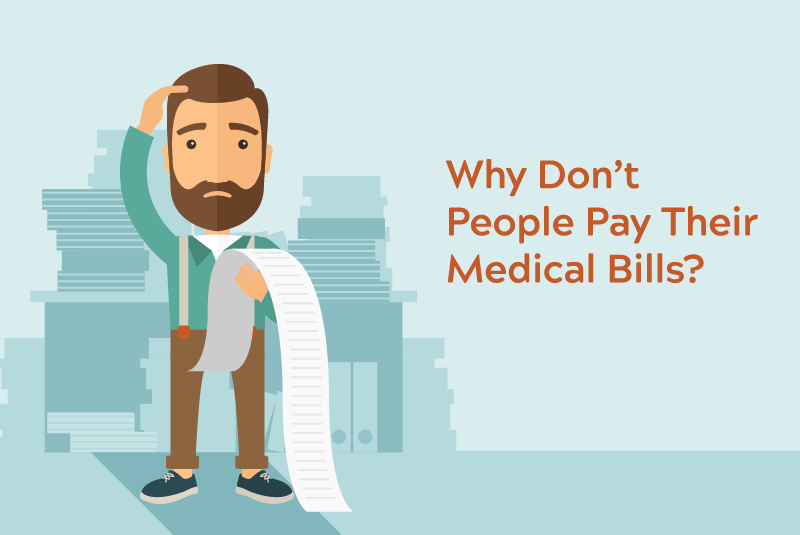Medical Bills Aren’t a Priority
When it comes to paying medical bills, for most people in the United States it’s just not a priority. In fact, just 7% of consumers ranked medical bills as one of the two highest priority bills they have. That’s lower than cable/phone/internet, which held the favor of 8% of consumers. Think about that the next time you’re on the phone with your cable provider…
Americans Have a Lot of Medical Debt
What happens when medical bills aren’t a priority? Those accounts go into delinquency and healthcare has the highest rate of consistent delinquency at 34%. Recently, the Urban Institute, found that the median amount of medical debt owed nationally is $681. Oftentimes, these accounts get referred collections agencies. According to a Consumer Financial Protection Bureau study, unpaid medical debt affects the credit of around 43 million Americans. A recent article in The Atlantic outlined the extremes to which some of these agencies will go to collect.
The end result of all this is that the patient/provider relationship gets strained, largely because the whole process is a bad customer experience.
People Are Willing to Pay Medical Bills
The statistics here paint a pretty bleak picture, but they don’t tell the whole story. Interestingly enough, the overwhelming majority of consumers are willing to pay their medical bills. For consumers that had $1000 or less in annual medical expenses 98% were willing to pay those bills. Of those, 74% were willing and able to do so. The picture is similar for consumers with more than $1000 worth of medical expenses, where 96% are willing to pay, and 62% of those people are able to do so.
This begs the questions:
How can providers get the majority of people both willing and able to pay their medical bills to engage with the payments process in a timely manner?
Why They Don’t Pay
No Financing
According to a McKinsey study, 37% of insured consumers said that the lack of financing options prevented them from paying their medical bills. The Raxia platform enables healthcare providers to offer financing plans to patients. We work with providers to determine and agree upon criteria for offering financing. This accelerates the payments process because there’s no need for anyone to manually analyze or review accounts first. As a result, the overall cost of the collections process goes down for providers.
Once patients enroll in a financing plan, their account is automatically debited for the term of the plan. Therefore, there’s nothing else for the patient to do or remember in terms of paying their bill. This makes it easier for patients to budget for medical bills and saves time for both providers and patients. All told, the end result is a much better customer experience for patients and higher remittance rates for providers.
The Bill Just Arrived
In the same McKinsey study, 19% of respondents said that they hadn’t paid their bill because they just received it. This gets back to the idea above that medical bills aren’t a priority. It’s increasingly common for people to have their most important bills on autopay. But that means when they get a one-off bill, like a medical bill, it can easily slip through the cracks.
To combat this, the Raxia platform can deliver digital statements immediately after a patient visit. Patients can choose to between SMS or email notifications. These clear, easy-to-understand communications facilitate increased engagement with the payment process.
Confusion
Many healthcare consumers are frustrated by their medical bills when they receive them. The option then is often to ignore it or spend a lot of time on the phone with their insurance company trying to make sense of it.
Raxia is combatting healthcare billing confusion head-on. Patients receive an itemized bill that breaks down each billed procedure, showing what the provider charged, what their insurance company covered, and what they owe.
Medical billing uses highly specialized language, which is the source of much confusion. Raxia provides clear, plain English explanations for every procedure. When they’re available and it’s appropriate to do so, Raxia statements also include videos that explain specific procedures. This all helps consumers understand what they’re paying for.



